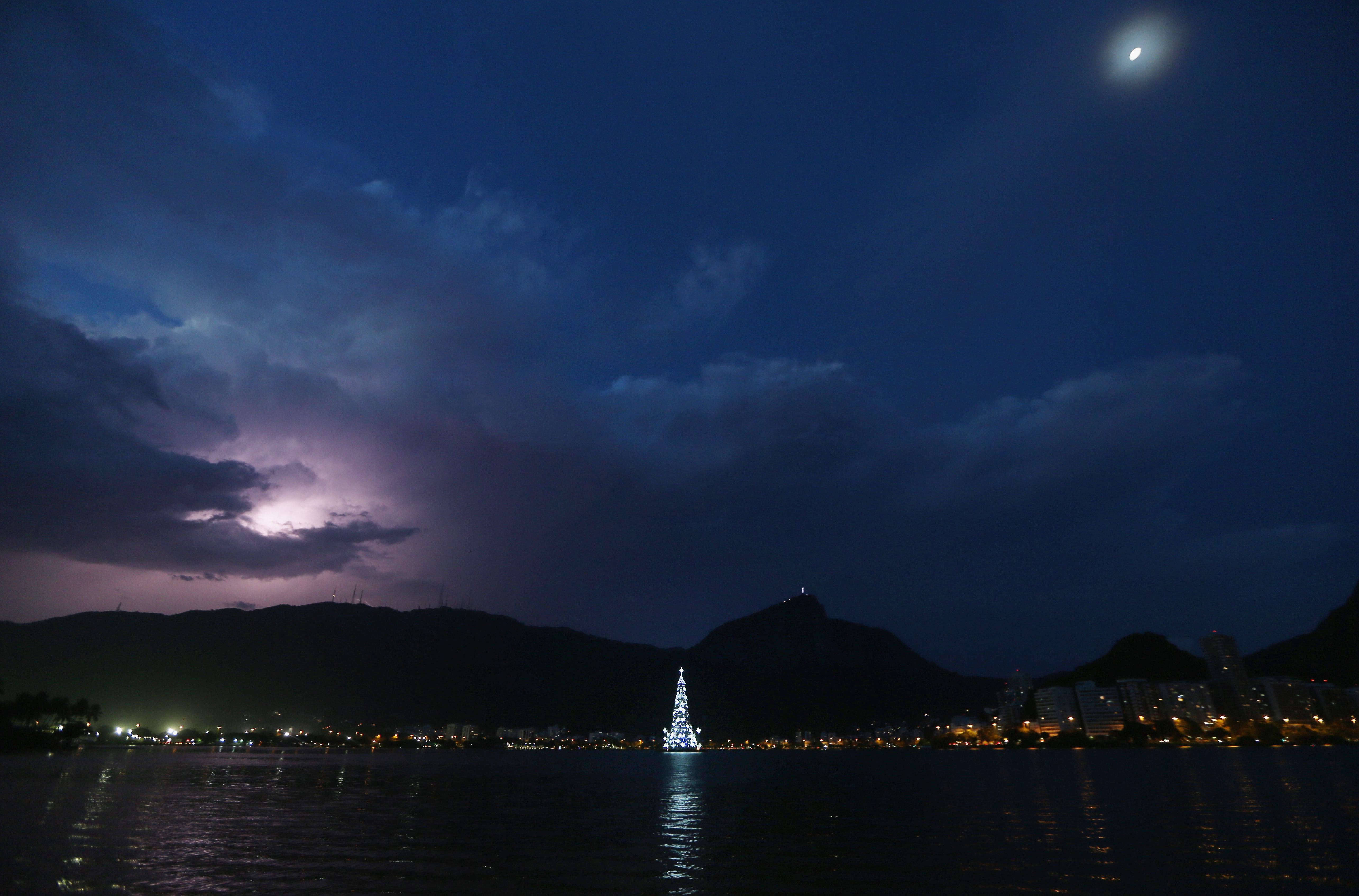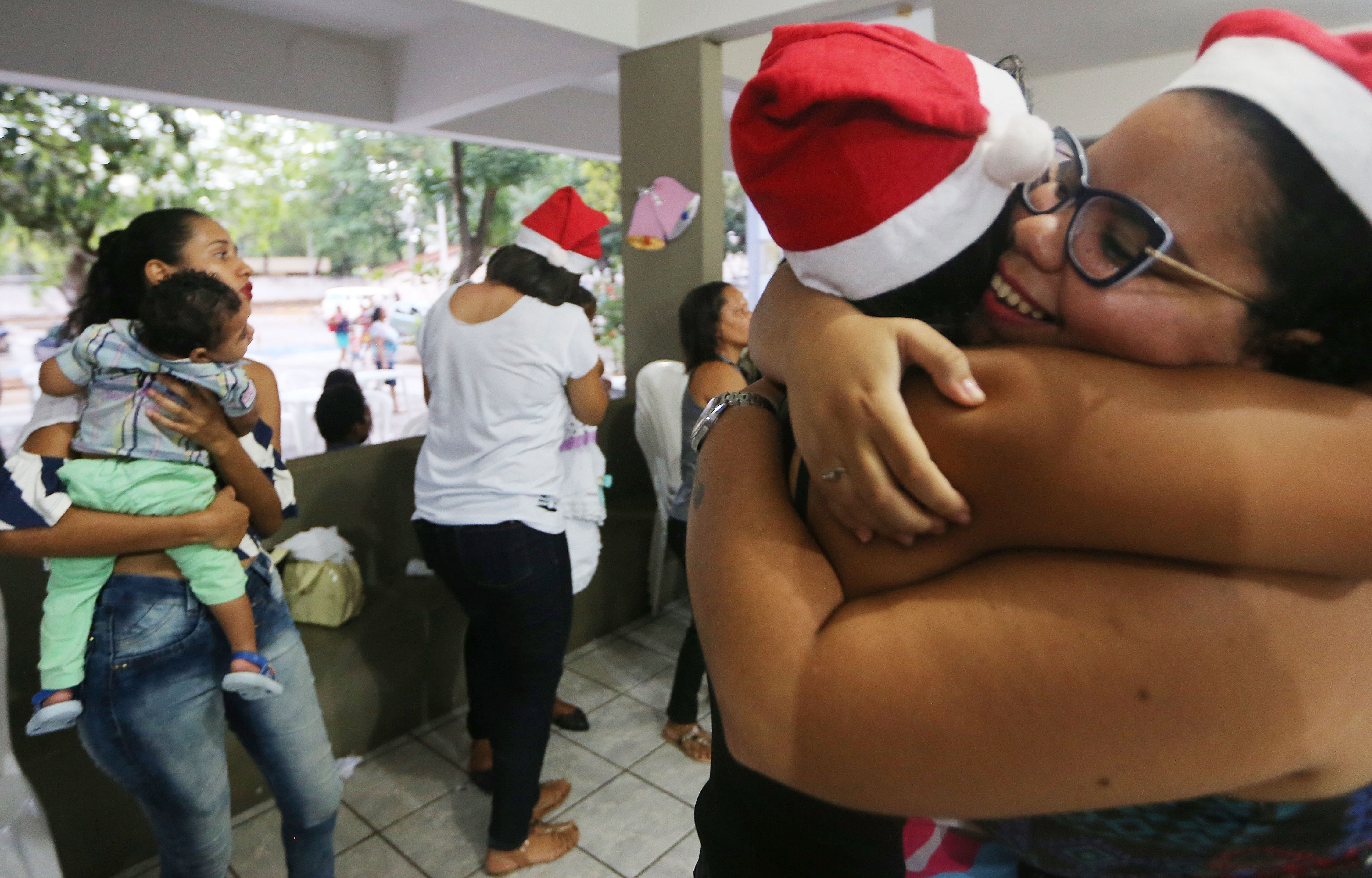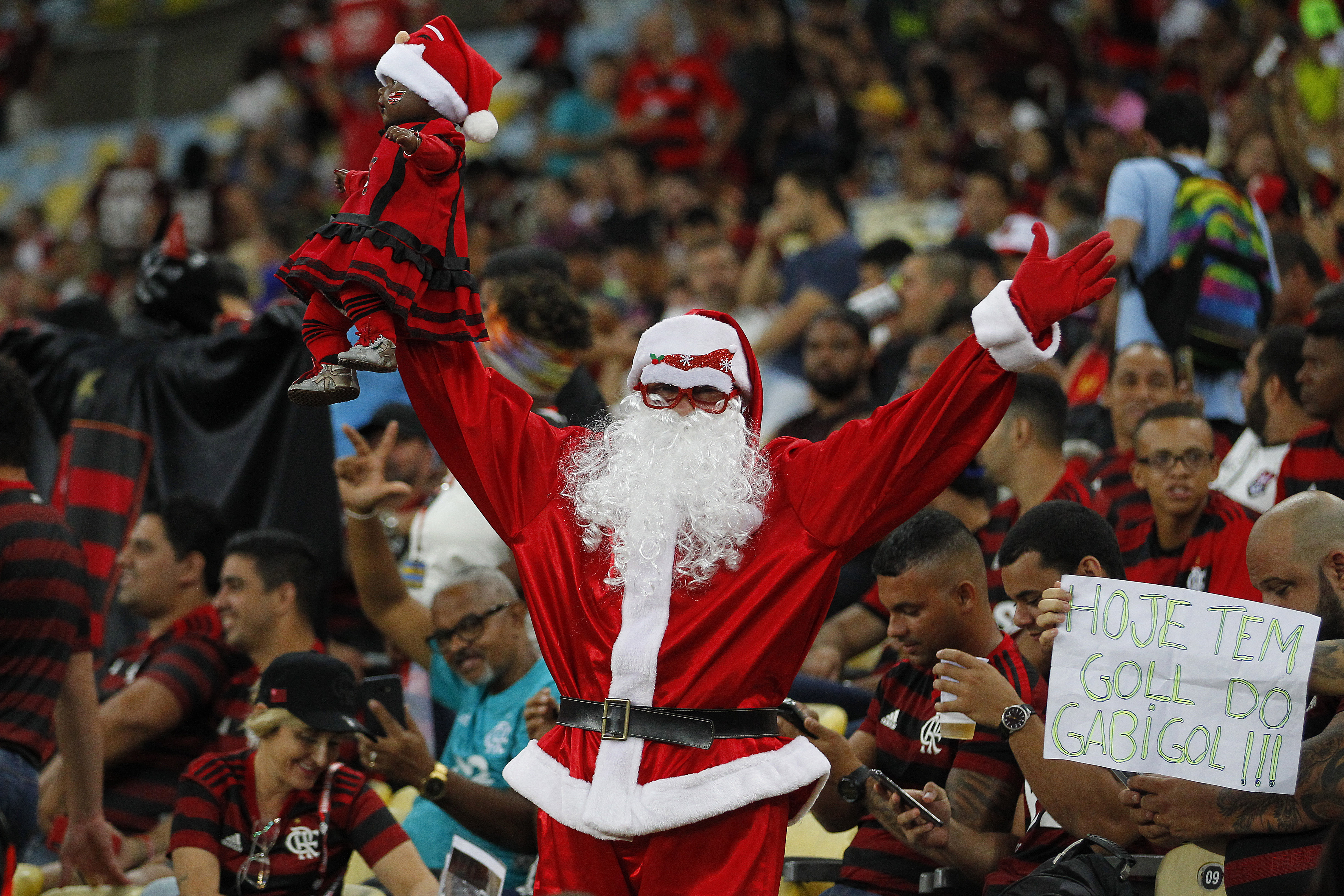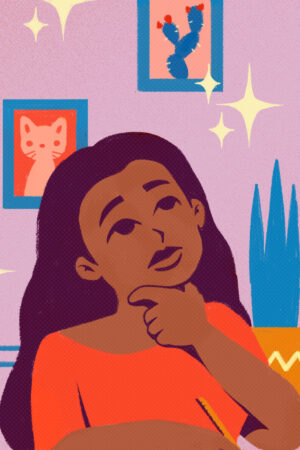During the holiday season in Brazil, it’s customary for children to watch movies from the United States and the United Kingdom that show a white, snowy Christmas. While these films portray freezing weather, families snuggled together in front of their fireplaces and Santa Claus dressed to survive the frost as his reindeer cross the skies to deliver presents, the scene outside Brazilian windows on December 25 displays hot summers, with temperatures near 90 degrees. But this hasn’t stopped Brazilian Christmas traditions from imitating the North.
Christmas in Brazil is widely loved, yet the way it is currently celebrated has been imported.
Going to the mall during the holidays is like being transported to a different world. The air conditioning is lowered to an almost-glacial temperature, fake snow is spread around stores and Santa Claus is seen sweating through his heavy winter clothes.
Christmas in Brazil is widely loved, yet the way it is currently celebrated has been imported, with heavy influences from U.S. and European media. While popular movies and TV series have played a role in how Brazilians construct Christmas, academics point to advertising as the main responsible party.
“Brazil will have a change in the way it celebrates Christmas in the 19th century, when there is the arrival of large department stores and the intercontinental trade is strengthened,” historian Givaldo Corcinio tells Remezcla.
According to Corcinio, in addition to the imported goods came new ways of life and seeing the world.
“The civilized, modern world was the European, the North American,” he adds.
Initially, the Brazilian Santa adopted Europe’s St. Nicholas aesthetic: a slim gentleman wearing clothes of different colors. By the 20th century, the U.S.’ fat Santa dressed in red and white started to emerge.

Before the U.S.’ and United Kingdom’s traditions made it to Brazil, end-of-year festivities had a religious tone, Corcinio says. Missa do Galo, or Midnight Mass, commemorated the birth of Christ, while Dia de Reis, or Epiphany, was celebrated days later with the exchange of gifts.
Brazilian Christmas was considered part of the country’s identity; therefore, Santa’s arrival gave way to an identity struggle.
The first reference to Santa Claus, or Papai Noel in Portuguese, in Brazil came in 1889 in Rio de Janeiro, then the capital of the country. In São Paulo, Santa Claus appeared later in 1907, and in criticism of the loss of Brazil’s Christmas traditions. Ten years later, the jolly man popped up again, but as part of a school program, then embraced by an urban population.
The initial resistance to the transforming year-end activities came from the church and some members of the elite class, which saw it as a devaluation of national culture. Brazilian Christmas was considered part of the country’s identity; therefore, Santa’s arrival gave way to an identity struggle.
“The construction of an image of Santa Claus and the Christmas party as a whole, with snow, reindeer, of European or American style, will come as this longing for an image of a modern place, beautiful, civilized, intelligent,” says Corcinio.
Kris Kringle was a symbol of modernity, a part of the profound cultural changes taking place in the country that were supported by those who believed that adopting foreign customs meant becoming civilized.
Decades later, opposition against the Anglo Santa Claus re-emerged from a new party, the Integralists, a political movement similar to Italian fascism that arose in Brazil in the 1930s.
“The Brazilian Integralist Alliance considered Santa Claus an agent who would have the capacity to break the national identity that they wanted to build,” historian Luiz Antônio Simas tells Remezcla.

The Integralists tried to create a Brazilian mestizo character — the Indian Grandpa, or Vovô Índio — who was imagined as the son of an Indigenous woman and an enslaved African man who was raised by European whites.
According to Simas, this holiday tradition revitalized debate about Brazilian national identity, with the Indian Grandpa, who’d come from the Brazilian forests bringing gifts for children, representing a cultural product native to the country and Santa Claus symbolizing commercialized foreign propaganda.
Kris Kringle was a symbol of modernity.
However, Simas says that, like the church, the Integralist’s objections, including proposing an alternative figure to Santa Claus, “did not work.”
“Santa Claus is definitively consolidated in urban centers until the 1960s, [when] it became a national phenomenon,” he continues.
For the generations that have followed, the Euro-American Christmas that was brought into the tropical country has become something so natural — or naturalized — that few stop to question it.
Jorge Purgly, 63, has been a professional Santa Claus in the small city of Indaial, in southern Brazil, for more than 10 years. He comes from a family of Santas, and with his white beard, round body and cheerful smile, he fits the U.S.’ idea of Saint Nick. For Purgly, who started dressing as the famous character after retiring from his job as an electrical engineer, it’s a sacred activity — though difficult in the Brazilian heat.

“I wear classic Santa Claus clothes, heavy, burgundy and white, but that can only be dressed under the air conditioning,” he tells Remezcla.
The holiday character is being reshaped in the South American country.
Last year, the Indaial City Hall felt bad about Purgly wearing winter garbs in summer weather and proposed a new outfit, the “tropical Santa Claus.” The new costume included shorts, a regatta shirt and light shoes. But Purgly says “not all Indaial residents liked the novelty.”
Aside from the heat, few have also questioned why Santa is white in a largely Black and mixed-race country. However, this, too, is changing.
In 2018, a shopping center in São José dos Campos, near São Paulo, had a Black Santa Claus, and he was a huge hit. Additionally, this year, the city of Rio de Janeiro has its first Black Santa at a shopping center in the Madureira neighborhood.
While Christmas in Brazil remains centered on the imported Santa Claus, himself a figure that has been culturally reconfigured since originating as the Dutch Sinterklaas and the English Father Christmas, the holiday character is being reshaped in the South American country to represent the clothing, climate, racial diversity and culture of Brazil.







